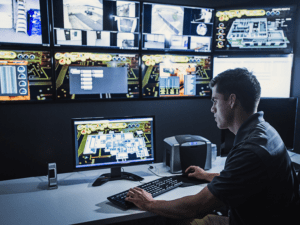Digitization Bolsters Healthcare Physical Security Where It’s Needed the Most
Credit to Author: Christopher Roberts| Date: Thu, 30 Jan 2020 18:02:12 +0000
Physical security is critical for achieving the hospital and healthcare clinic goals of patient and staff safety. According to the Joint Commission, a body that accredits more than 21,000 US healthcare organizations, 75% of nearly 25,000 annual workplace assaults reported occur in healthcare settings. In addition, according to the American College of Emergency Physicians (ACEP), nearly 7 out of 10 emergency physicians believe that emergency department violence is increasing.
Healthcare physical security measures consider not only the safety of healthcare patients, staff, and visitors, but also address the safety of facility surroundings, both inside and outside of buildings. This includes the specialized medical equipment, computers, and physical infrastructure systems (like power and air ventilation) inside and the parking and exterior lighting systems outside. The security umbrella also should include careful tracking of the delivery of drugs from pharmaceutical inventories to the patients who are dispersed across the facility.

In many ways, assuring physical security within healthcare institutions is more complex than is the case for typical office buildings. For instance, hospitals are open for business 24 hours a day and 7 days a week. Patients under psychological duress, a higher than average turnover of medical staff, and visitors that enter the premises in a distraught frame of mind, all increase threats to physical security. Consider the extreme situation of an emergency room where members of opposing street gangs come in for treatment after a violent altercation. Emotions run high and the actions of patients and visitors are unpredictable.
Hospitals also host a unique clientele. Newborn children in a maternity ward and elderly patients who suffer from acute memory loss and disorientation require an almost constant surveillance in order to ensure their safety. Healthcare research facilities are also at risk when they are targeted by political action groups that question the ethics of animal testing or that oppose clinics that offer planned parenthood services.
New physical security technologies help address the complexities
Successful enhancement of physical security in healthcare settings requires long-term, multi-dimensional planning that accounts for both staff member policy and procedure, education and deployment of modern technologies. An institution can have all of the right types of physical security in place, but if the wrong door is left ajar, the entire purpose of securing the facility has been compromised.
Security is incident-driven and risk-based. But a security plan can be very different depending on the geographical location of the healthcare institution. Regardless of the location of a facility, the best security plans are put into place based on the biggest perceived risks. That, in turn, then determines the types of technologies required to provide the required security environment.
- Selection & Recruitment
- Policy & Procedure
- Training & Education
- Technology – the Force Multiplier
Companies like Schneider Electric offer physical security support across many areas of healthcare facilities with an integrated security management platform. Examples include both biometric (thumbprint recognition) and card reader access control solutions, and monitoring technologies such as cameras, motion detectors, and metal detectors that help reduce theft and other crime inside of the healthcare facility. Applications that check pre-registration ID and credentials against the prime registry information are also useful in determining visitor past history. Other digitized technology solutions that enhance security include real-time location applications that can track the movements of infants and geriatric patients through use of smart tags placed around a wrist, duress systems that use WIFI and RFID technology to enhance the security of staff members, and even simple buttons under a desk that generate alarms and notify staff members of any problematic situation concerning security. Expensive physical assets such as mobile medical equipment and wheelchairs can also be tracked and alarms generated when the devices are removed beyond regular acceptable boundaries.
Technology integration enables more effective physical security
Some of these technologies can even be combined in optimal ways. In hospital or clinic pharmacies, for example, both biometric thumbprint and access cards can be used together to let authorized personnel in but to sound an alarm if something is amiss. Consider the example of an intruder who follows close behind someone passing through a door with a card key but who then cannot access the drugs inside because of an unauthorized thumbprint.
How these diverse systems are managed in an efficient way can be challenging. Schneider Electric combines an open security technology architecture with healthcare knowledge and experience to help clients identify risks and to consolidate disparate systems. Such an integrated control platform can minimize physical security exposures while also reducing the amount of labor-intensive work involved.
To learn how Schneider Electric can help bolster physical security within your healthcare facility, visit EcoStruxure for Healthcare Security Management.
for Healthcare Security Management.
The post Digitization Bolsters Healthcare Physical Security Where It’s Needed the Most appeared first on Schneider Electric Blog.
http://blog.schneider-electric.com/feed/